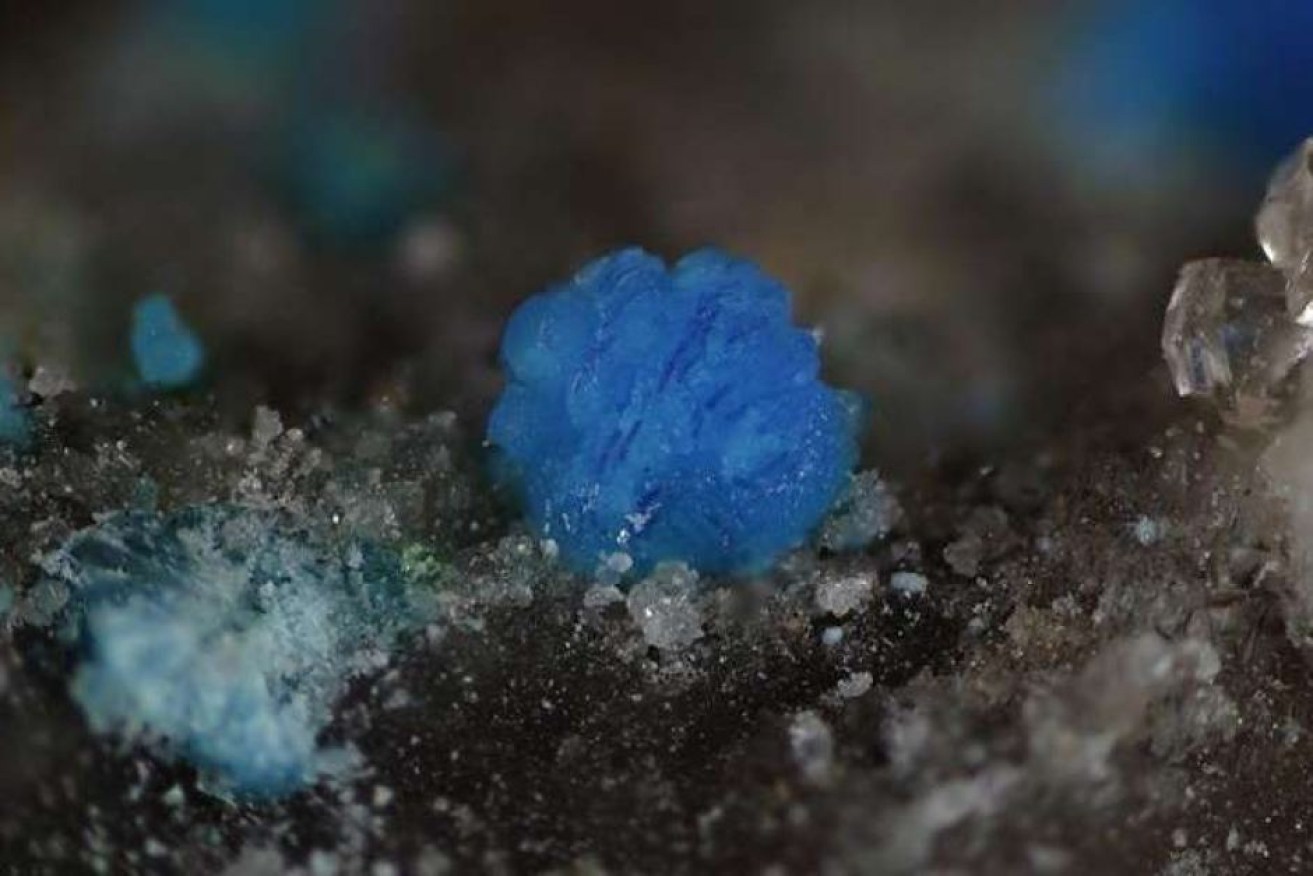Rare minerals hold key to understanding origin of life

ABC/University of Nevada
A new catalogue of the Earth’s rarest minerals contains some that are found in such small quantities the entire supply would be smaller than a sugar cube, scientists say.
Of the 2550 minerals listed, many contain fundamental information about the formation of the Earth.
“You say why study them, they seem so insignificant, but they are the key to the diversity of Earth’s near-surface environments,” co-author Dr Robert Hazen said.
• Mining asteroids to become the new space race
• Search for ‘holy grail’ of scientific collections
• Man killed ‘by meteorite’
“It’s the rare minerals that tell us so much about how Earth differs from the Moon, from Mars, from Mercury, where the same common minerals exist but it’s the rare minerals that make Earth special.”
Dr Hazen and his co-author Professor Jesse Ausubel, from The Rockefeller University, said that rare minerals can not only help geologists understand the history of Earth, but may provide keys to the origins of life.
“Another possible contribution of rare minerals, though as yet speculative, relates to the origins of life,” the scientists wrote in a paper accepted by the journal American Mineralogist.
“While most origins-of-life scenarios incorporate common minerals such as feldspars or clays, a number of uncommon minerals, including species of sulfides, borates, and molybdates, have also been invoked.”
Rare minerals question traditional categories
The paper establishes a system for categorising rare minerals, which are defined as a mineral only found at five or fewer sites around the globe.

Diamonds may be expensive, but they aren’t truly rare. Photo: Shutterstock
They note the irony that precious gems and other minerals highly valued by humankind do not meet the definition of rare as far as Earth is concerned.
This includes not only gold and platinum but the “rare earth elements” required to make electronics.
“Diamond, ruby, emerald, and other precious gems are found at numerous localities and are sold in commercial quantities, and thus are not rare in the sense used in this contribution,” the paper says.
“Uses of the word ‘rare’ in the context of ‘rare earth elements’ or ‘rare metals’ are similarly misleading, as many thousands of tonnes of these commodities are produced annually.”
On the other hand, true rarity is demonstrated by ichnusaite, a compound of molybdenum and radioactive thorium, which is only known through one specimen found in Sardinia a few years ago.
“If you wanted to give your fiancé a really rare ring, forget diamond. Give her Sardinian ichnusaite,” Dr Hazen said.
The paper noted that although 5,090 minerals are formally recognised, fewer than 100 make up 99 per cent of the Earth’s crust.
More than two-thirds of known mineral species “including the great majority of rare species, have been attributed to biological changes in Earth’s near-surface environment,” the paper says.
“We need to re-think ‘animal, vegetable, or mineral’,” Professor Ausubel said.
“In the old parlour game, if it isn’t alive, doesn’t grow and comes from the ground, it’s a mineral, but some of these rare minerals do grow and don’t entirely come from the ground.”
Unique conditions, rare ingredients, unstable or hard to find
The rare minerals are categorised into one or more of four categories:
• Unique conditions that form the mineral;
• Planetary constraints (formed from extremely rare elements or under extremely rare conditions);
• Ephemeral minerals (which melt, evaporate or dehydrate when exposed to different conditions);
• Places geologists rarely sample.
“In very simple terms, imagine making minerals at a kitchen stove using a pressure cooker,” Dr Hazen said.
“What results in the pot is a function of variables: temperature, pressure and the ingredients – one or more of just 72 chemical elements that make up Earth’s mineral kingdom.
“Some minerals are rare because, even though they form from the commonest of ingredients, they must be cooked at exquisitely controlled conditions.”

The only discovered specimen of ichnusaite. Photo: ABC/American Mineralogist
The mineral hatrurite is formed from calcium, silicon and oxygen, three of Earth’s most abundant elements, but it is only formed at temperatures above 1250 degrees Celsius and in the absence of aluminium, which is also very common.
Planetary constraints are demonstrated by minerals formed from elements that are extremely scarce, such as beryllium or hafnium.
Ephemeral minerals include a crystalline form of methane hydrate, which evaporates at room pressure, are found in core samples from Arctic drill sites.
“Water-soluble minerals may also be under-reported, and thus appear to be rare,” the paper says.
More than 100 mineral species can persist in dry environments for many years, “only to be washed away during rare rain events.”
Some minerals even dissolve in moisture that they actively absorb from the air.
Some minerals, however, are believed to be rare because they are formed on the slopes of erupting volcanoes, remote regions of Antarctica, or the deepest reaches of the oceans, where geologists do not often venture.
Dr Hazen lists the fingerite as “a perfect storm of rarity”.
“Fingerite forms under extremely restrictive conditions (category 1), from rare elements (category 2), it is water soluble and disappears when rained upon (category 3), and it comes from dangerous volcanic fumeroles near active volcanoes, so is rarely collected (category 4),” he said.
“Consequently, fingerite is only known from near the summit of the Izalco Volcano in El Salvador.”








